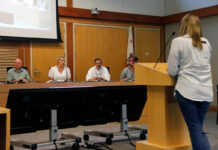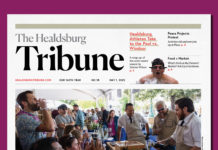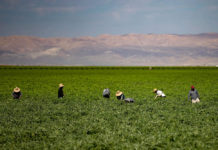We weren’t at the Dallas Black Lives Matter march last week where a rogue sniper killed five police officers. We were home with our families, maybe sharing conversations with our neighbors after another work day. We were with our kind.
Neither were we at the Minnesota or Baton Rouge, Louisiana police shootings a few days earlier, but we saw them on Facebook and the TV news. More police shootings, more senseless violence, more racial talk and stereotyping. But it wasn’t about us. Those faces were not our kind.
The three scenes of death exploded across social media and stirred up local reaction and news stories, all shocking and too familiar. Once again we had to ask whether our country is really so violent and divided. We all had to figure out where our kind fits into this bigger picture.
All of us in Sonoma County were forced to remember the tragic killing of Andy Lopez by sheriff’s deputy Erick Gelhaus in October, 2013. How are all these shootings connected? Aren’t we separate and different from those other kinds of communities? That’s not our kind.
This is not about bad cops or too many guns. It’s not about Black Lives Matter, or brown lives or the color of one’s skin. This isn’t about racism and hate and a torn and divided country. Is it?
Yes. Yes it is about all those things. And us and our kind shouldn’t ignore it.
In America, half of all white people live in communities or neighborhoods that are at least 75 percent white or greater. They live among their own kind, separate and divided just like us. Here in Sonoma County, the population is 66 percent white and just 25 percent Latino, with blacks barely represented. We also live in mostly all-white or all-Latino neighborhoods.
Sonoma County claims to be a very diverse and tolerant place to live. But this is not true. The seminal 2014 report, “A Portrait of Sonoma County” proved this. We live, work and play with our kind. We may preach tolerance, but we don’t go out of our way to practice it. Within the same zip code, Latino neighborhoods have much lower life expectancy, poor health and higher crime statistics than the nearby affluent white neighborhoods, the 2014 Portrait statistics show.
Real physical barriers and social divides exist here that prevent real diversity and multicultural understanding. On one side of the street our local law enforcement officers are viewed as protectors. Around the corner, young Latino males fear and stand guard, knowing they have been marked with racial profiles and different expectations.
We are two kinds, not so long ago kept apart by institutional segregation and now just by old, old biases.
The racially tinged violence of the Dallas police massacre and the cop shootings of surrendered blacks in Minnesota and Baton Rouge is not new to us. We also watched the Rodney King police beatings in Los Angeles in 1992. The 1965 Watts Riots that left 34 dead and 1,032 injured, started from a single traffic stop with no guns drawn.
America survived the political assassinations, inner-city riots, antiwar fire bombs and the racist presidential campaigns of George Wallace and others. We ended that most violent decade of the 1960s by electing Richard Nixon, a “law and order” president.
Then we drifted through time, staying in our all-white suburbs or pushed into low income (not white) neighborhoods. We stayed with our kind, in our churches, civic clubs, fraternal groups and police units.
We gave ourselves credit for being against racism and other prejudices. But we never stopped being two Sonoma Counties, a rich and a poor one, a more brown one and a much more privileged one.
Now, we are being challenged. Which one is our kind?
— Rollie Atkinson








